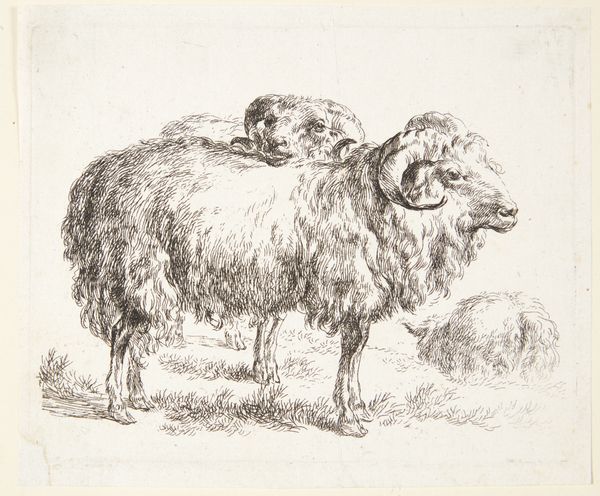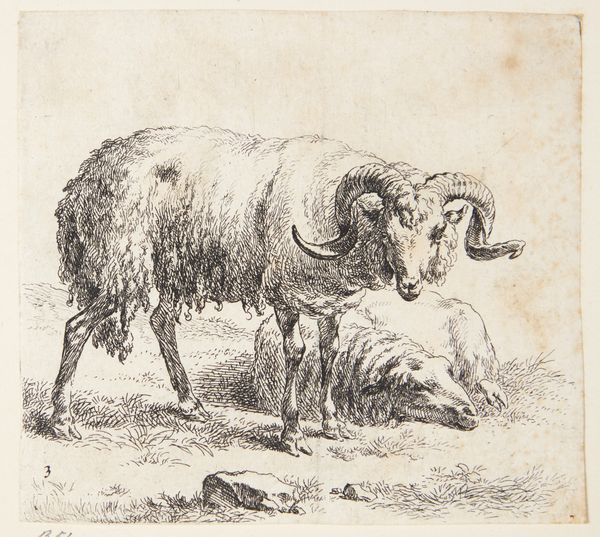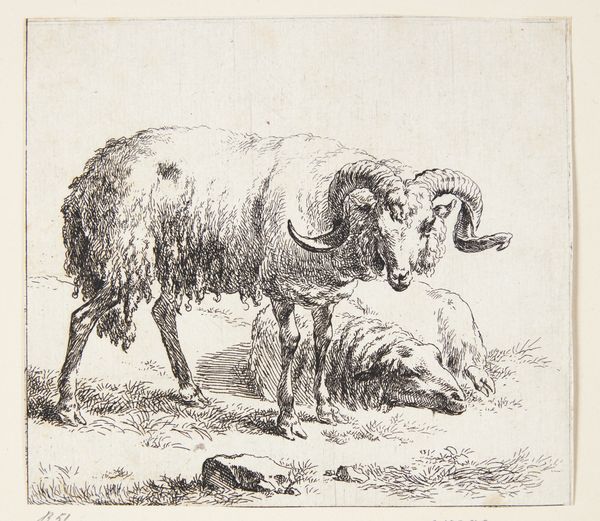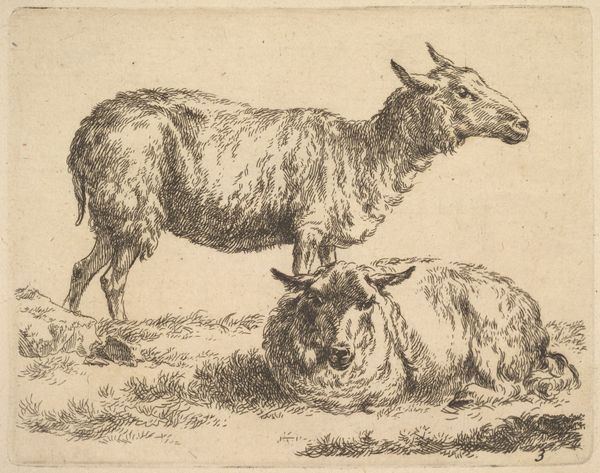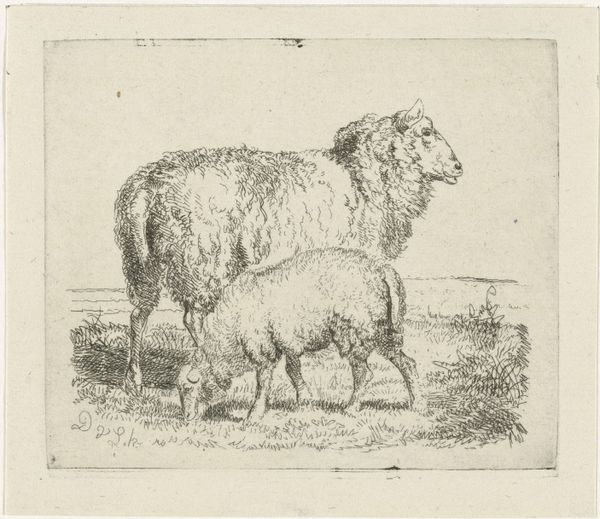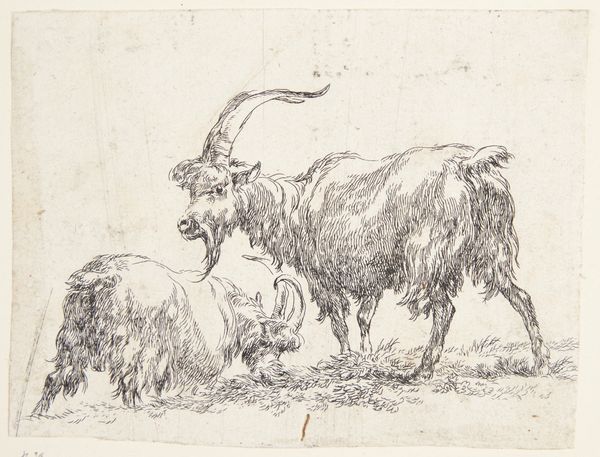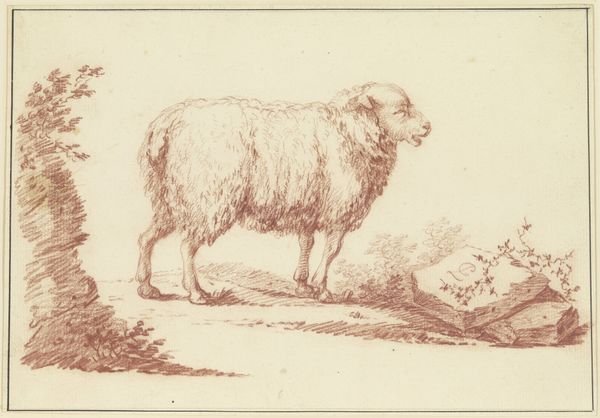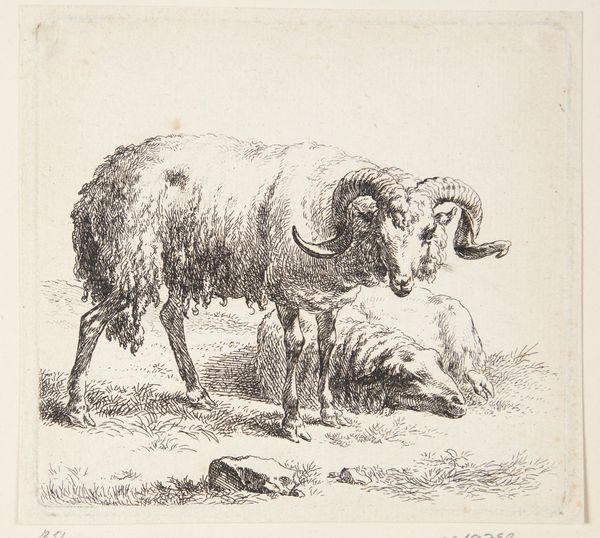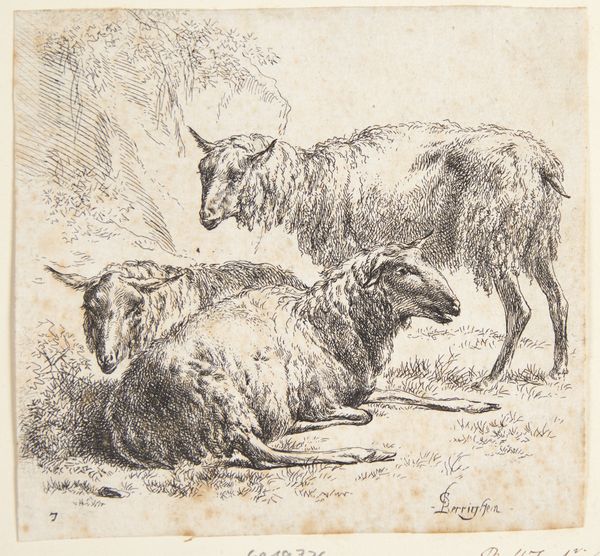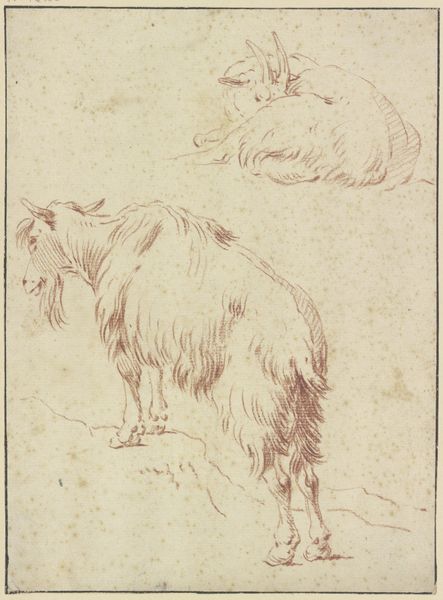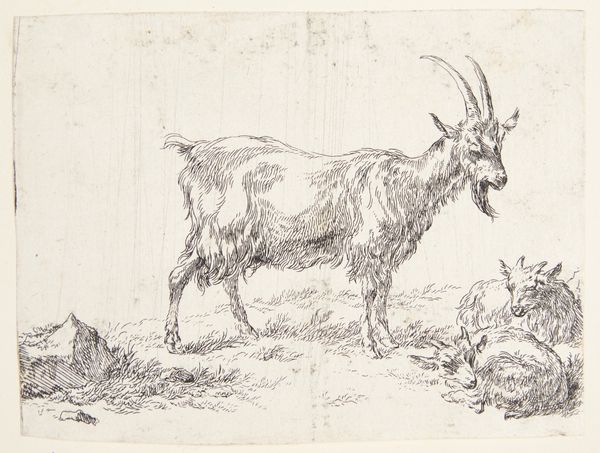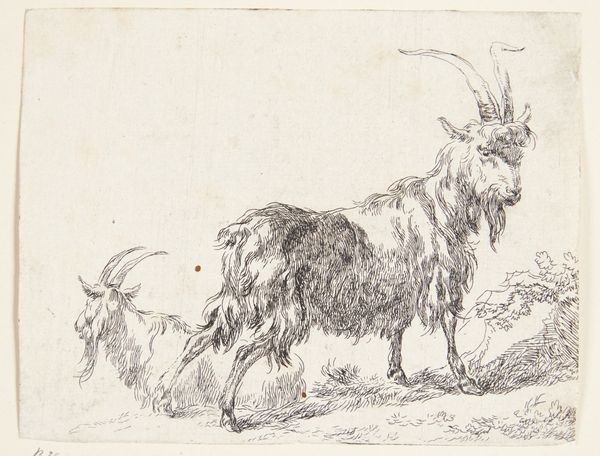
drawing, print, etching, ink
#
drawing
#
baroque
#
animal
#
dutch-golden-age
# print
#
etching
#
landscape
#
figuration
#
ink
#
realism
Dimensions: 102 mm (height) x 129 mm (width) (bladmaal)
Editor: This etching by Nicolaes Berchem, titled "Two Rams" and created sometime between 1620 and 1683, is strikingly simple. Just a few sheep, rendered with delicate lines. It's interesting how much personality he conveys with so little detail. What do you see in this piece, especially in terms of how it might have resonated with viewers at the time? Curator: The rams, rendered in this Dutch Golden Age landscape, immediately trigger the symbolism of prosperity and pastoral ideals. The ram itself, a potent symbol throughout history, can represent virility, leadership, even sacrifice. Consider the Golden Fleece – an object of immense value, sought after by heroes. Berchem cleverly uses familiar iconography. What does it tell you about the human relationship to nature in the 17th Century? Editor: I guess they wanted to project an image of harmony, of man living in peaceful abundance with nature. It feels a bit staged, almost. Curator: Precisely! There is a constructed element to this idyll. Berchem, like many artists of his time, tapped into a collective desire for order and plenty. And the careful etching technique mirrors this – a controlled, idealized vision. Doesn't the curl of their horns seem almost… deliberate? Editor: They do! It's like he's carefully arranging a scene to convey a particular feeling, and to connect to deep cultural memories and ideas. Is this image also making a connection to power? Curator: In a subtle way, yes. The strength and the idealized virility would reinforce these symbols. It is something the upper classes would often embrace when commissioning the image. Editor: I never considered that landscape art could carry so much symbolic weight. Curator: It’s a reminder that art isn't just about what's on the surface; it's about the echoes of history and the symbols that resonate within us. This piece, seemingly simple, opens a window into a complex world of cultural values.
Comments
No comments
Be the first to comment and join the conversation on the ultimate creative platform.
